The Art of the Lambeau Leap
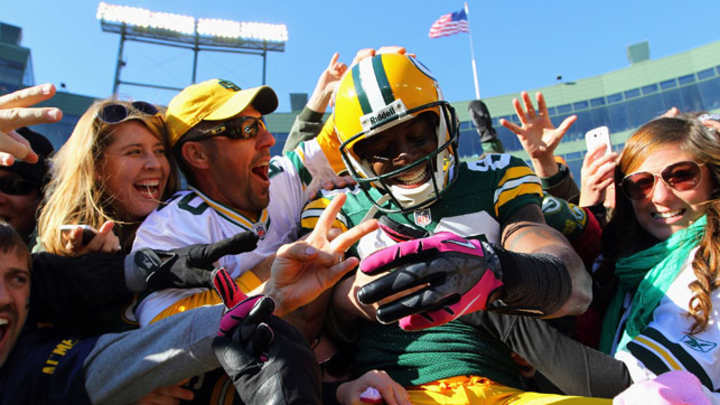
It’s Green Bay Week at The MMQB: Our staffers are embedded for a game week, doing a deep dive into the NFL’s most tightly knit community. We’ll explore the dynamic between the players and the people of Green Bay and provide a glimpse into what makes it a bucket-list destination for football fans. Follow on Twitter for updates, Facebook for live streams, and Instagram for our “Humans of Green Bay” project.
An NFL tradition like no other started in 1993, when Packers safety LeRoy Butler scored a touchdown and celebrated by spontaneously jumping into the stands. Since then, every Packers player has looked forward to taking his own Lambeau Leap, a rite of passage so revered that it remains untouchable during an era in which the excessive celebration penalty flags get thrown around like parade candy. But the Leap isn’t as simple as it looks. Misjudge your timing by a hair and you’ll find yourself desperately climbing the wall, legs flailing, and praying that the fans above you are strong enough to hoist you up. And if you do mess it up, your blooper reel will be shown in team meetings throughout next week for every teammate to critique your effort.

During Ahman Green’s playing days, the Lambeau Leaps were scored on a scale of 1-10. “Almost like diving competitions,” he says. But today the critics are more forgiving. “It’s definitely pass-fail,” receiver Randall Cobb says. “We don’t really scale it, we just say make it up the wall—and if you don’t, we’re going to make fun of you.”
We talked to current and former players about how it should be done.
Save your energy
Mike Daniels knows the ridicule that a botched leap can bring. In 2012, the defensive end picked up a Matt Stafford fumble and ran 43 yards for a touchdown. But when he got in the end zone, he was drained and intimidated by the 6-foot-plus wall. “The wall got taller and taller and taller as I approached,” says Daniels, who’s 6-foot, 290 pounds. “I just ran 43 yards, I don’t know if I have enough energy to get up there. I jumped and couldn’t get all the way up there.”
Daniels strained to get his left knee up on the wall for a second or two before giving up and landing back down on the ground. “I was tired, I could not get up there,” Daniels says. “Every time we see that clip, everybody starts laughing. But, hey, I got a Lambeau Leap, so laugh all you want.”
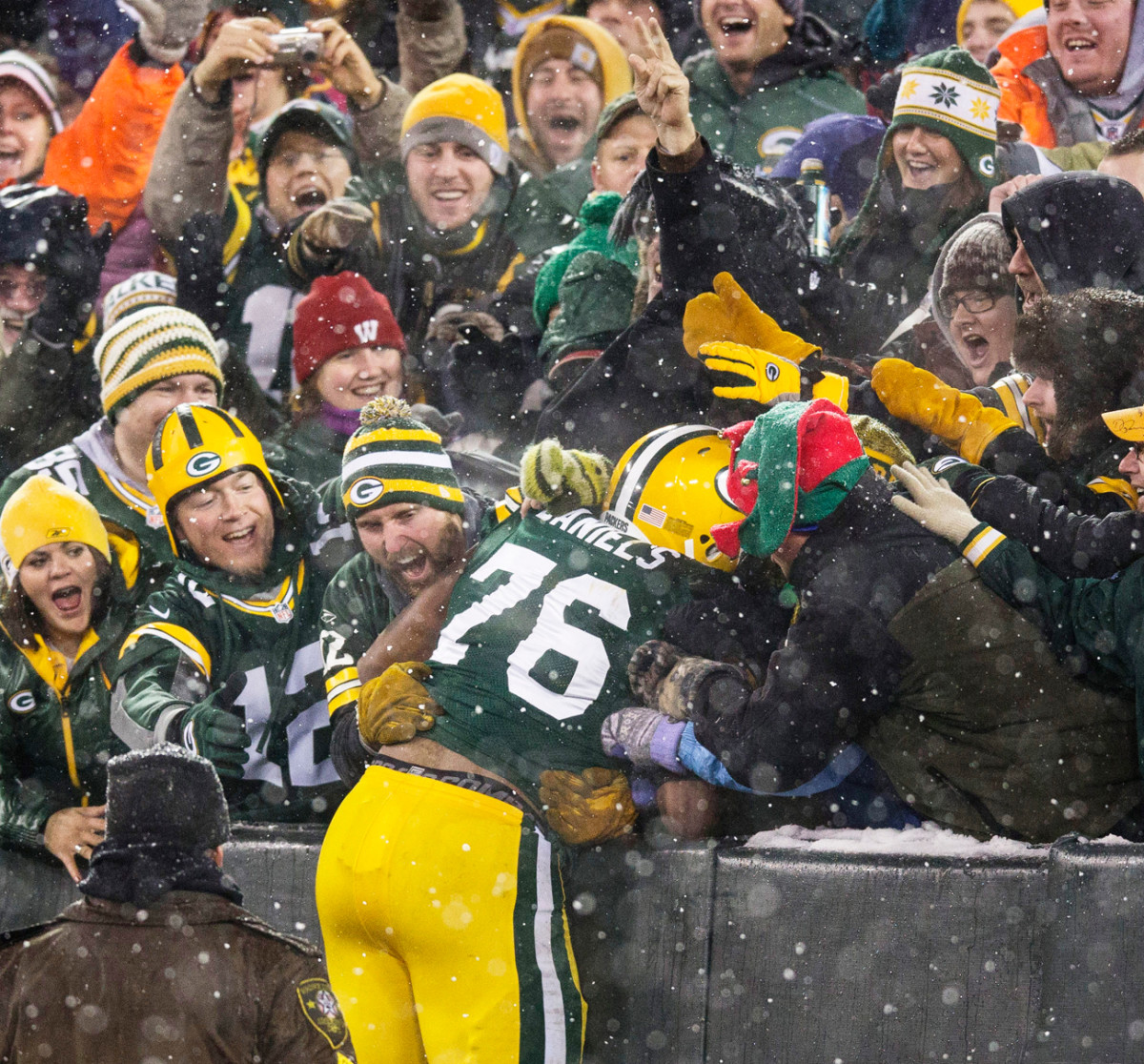
The north end zone is your friend
Green says the wall in the south end zone is taller than wall behind the north end zone. “The first time I got a touchdown and decided to leap on the south side, I said, Man, it is a little bit higher. So I took my time, got my footing and jumped.”
According to the team’s website, the average height of the wall is 6 feet, 4 inches. Some areas are higher, but the wall’s lowest point is in the center of the north end zone, where it is just shy of four feet. But for receiver Jeff Janis, making the jump shouldn’t be about location. “For us skill guys, you just get that adrenaline pumping, you just pop right up there and it’s not a big deal,” he says. “The wall doesn’t grow.”
Daniels was relieved to learn that the wall is shorter in the north end zone. He attempted his one and only failed leap on the opposite end. “Maybe it is the wall,” he wondered. “But no excuses. I gotta get over the wall.”
Think of it like a dunk
Janis uses a helpful basketball analogy to break down the Leap. “It’s like you’re going in for a dunk,” he says. “You run toward the wall, and as soon as you think you’re close enough, you gather yourself, turn sideways a little bit and jump and spin in the air. Let your legs hit, sit down and then all the fans grab you.”
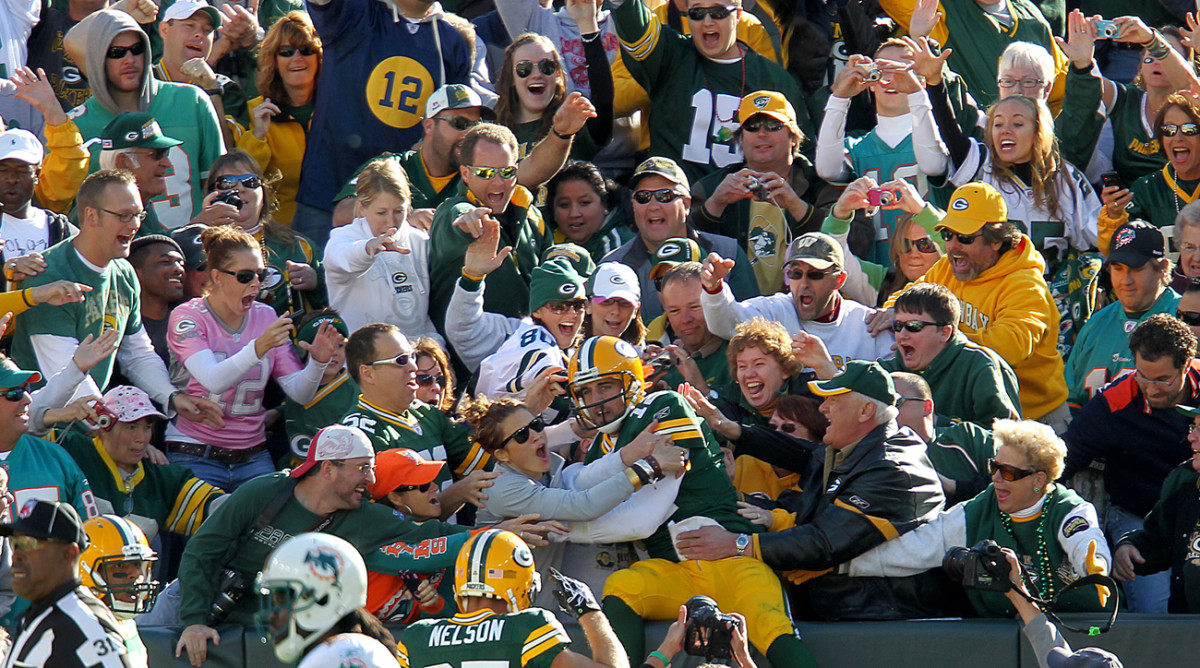
Use the crowd to your advantage
Cobb’s first leap was a true Green Bay team effort. “It actually looked smaller until I jumped and realized that I couldn’t make it up,” says Cobb, who packs 192 pounds onto his 5'10" frame. “I had to grab and have the fans pull me up and help me up a little bit.”
But sometimes players are too large for the fans to make the assist. Richard Rodgers, a 6'4", 245-pound tight end, weighed fans down on his first attempt, against Dallas in the 2014 playoffs as a rookie. “We had a long drive, and I had ran two or three routes in a row, and I had no energy to get up there,” he says. “So I was kind of one arm up and the rest of my body down. I was too heavy for the fans to pull me up. They tried their best, and I was halfway up there.”
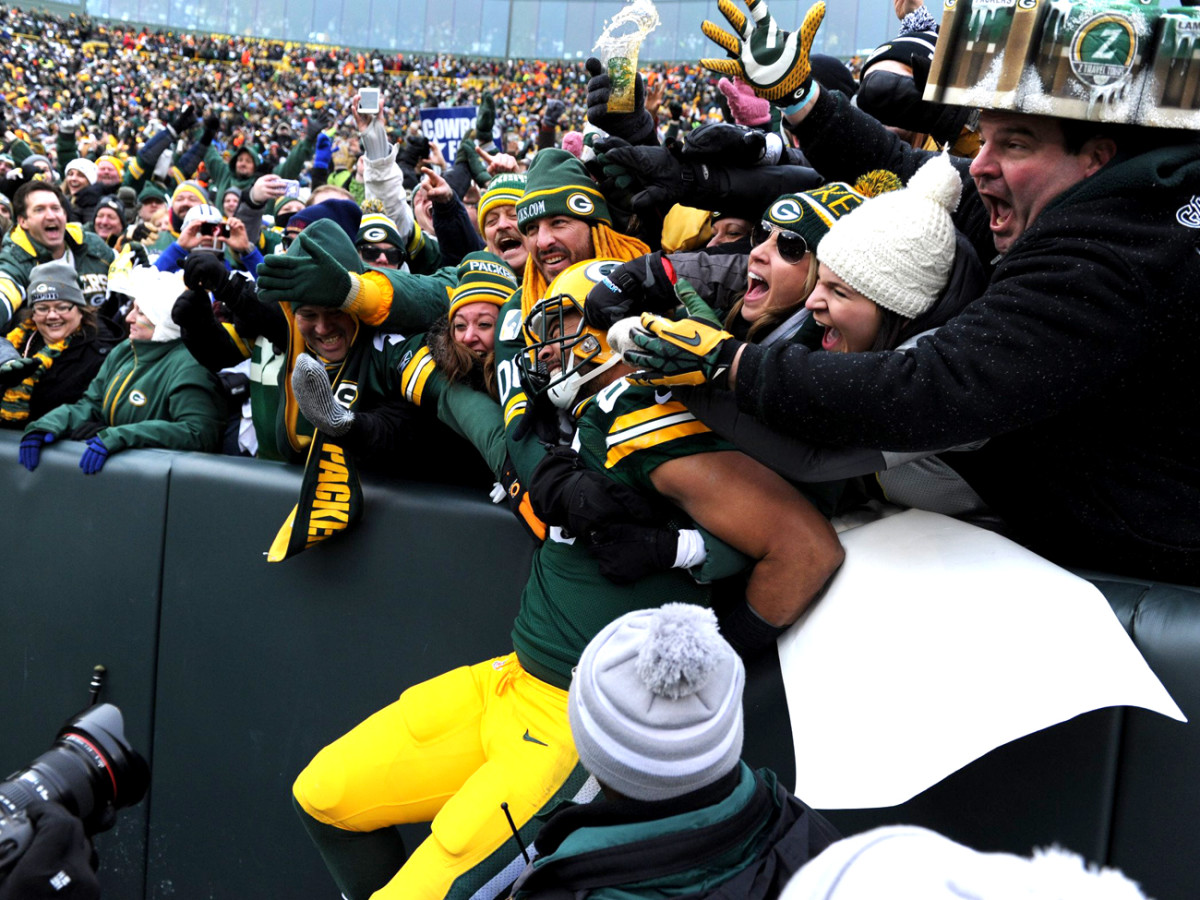
“For guys like Richard, they don’t quite get there, they just kind of hang over the wall,” Janis says with a laugh. “In team meetings we will just replay it. And everybody will laugh at it.”
• JOCK/GEEK: Ahman Green’s Life in Green Bay
Be prepared for a beer bath
A sign of a successful leap is reeking of beer for the rest of the game. “I was forewarned about going up there,” Green says. “Antonio Freeman told me, ‘Ahman, you might take a Miller Lite bath. When you get up there, they grab you, and they might have a 64 oz. beer, and they forget about it because they want to grab you and they forget about the beer.’ And sure enough, that is what happened, I jumped up there and right away had beer going all down my shoulder pads. I was like, Ah, this is good. It was cold. It was very refreshing. Every time I Lambeau Leaped, I got drenched. I could smell it after the game in my pads.”
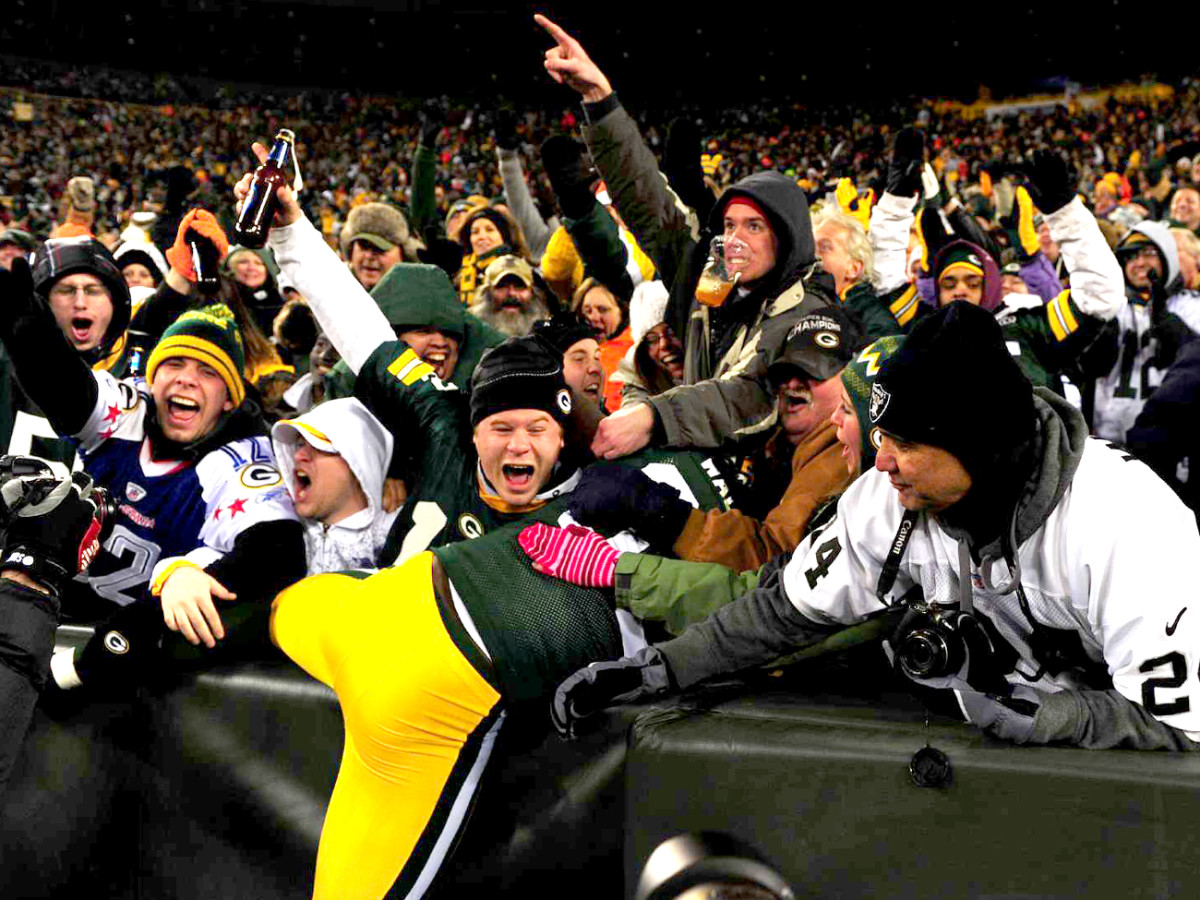
Cover yourself
Cobb has a piece of advice for leapers: “I’ve learned you have to cover yourself and protect yourself because some people get a little … handsy.”
“The women would get grabby, grabbing butt, and I would be like, Oh, I need to get out of here quick.” Green says. “A few times I felt violated after I left the stands. They get star-struck, excited, it’s not every day that your favorite player jumps in your lap.”
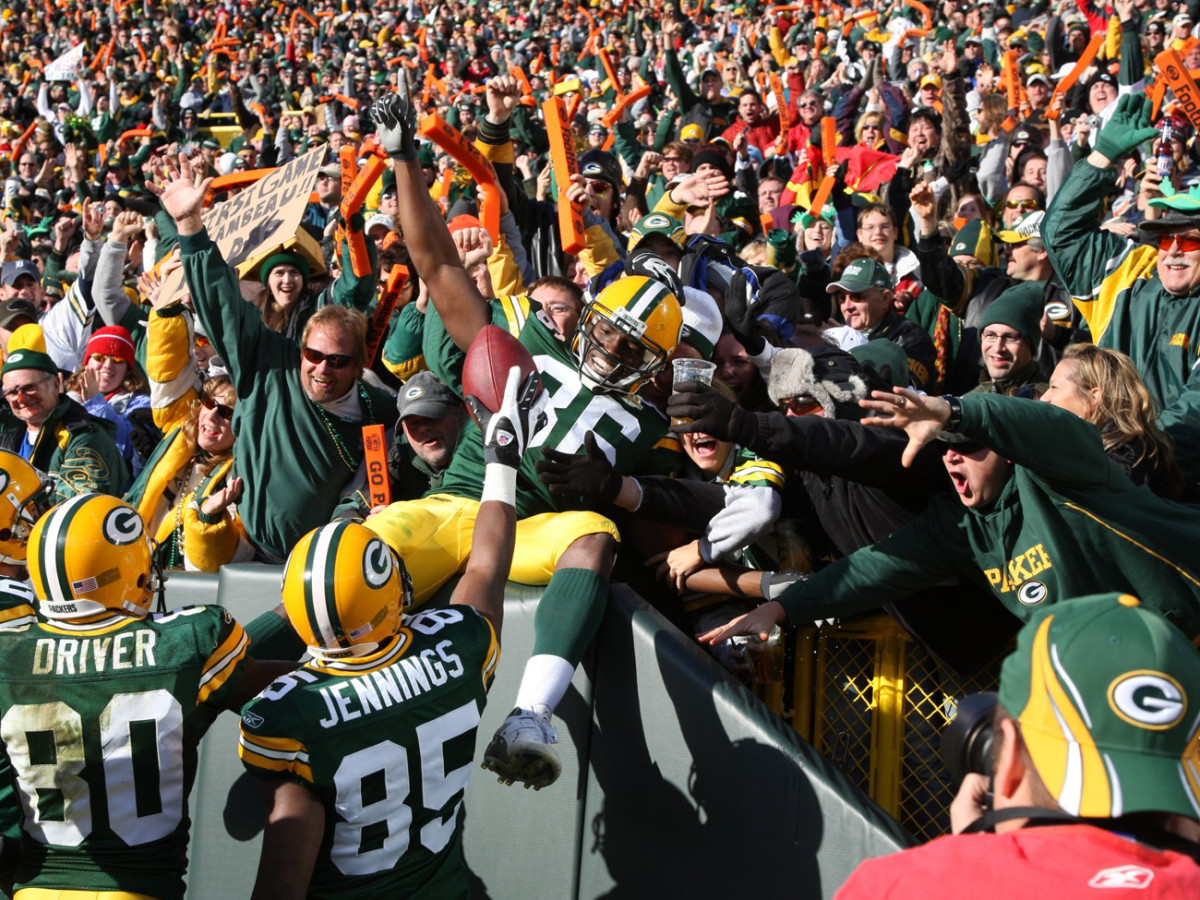
Janis has never had the butt-grab, but he has had his helmet tugged. “The only thing bad that I’ve really had happen is someone reaching from behind and pulling my helmet so my chinstrap ended up over my eyes,” says Janis. “That was my first one ever, I was like, Wow, these fans are crazy.”
Question? Comment? Story idea? Let us know at talkback@themmqb.com
